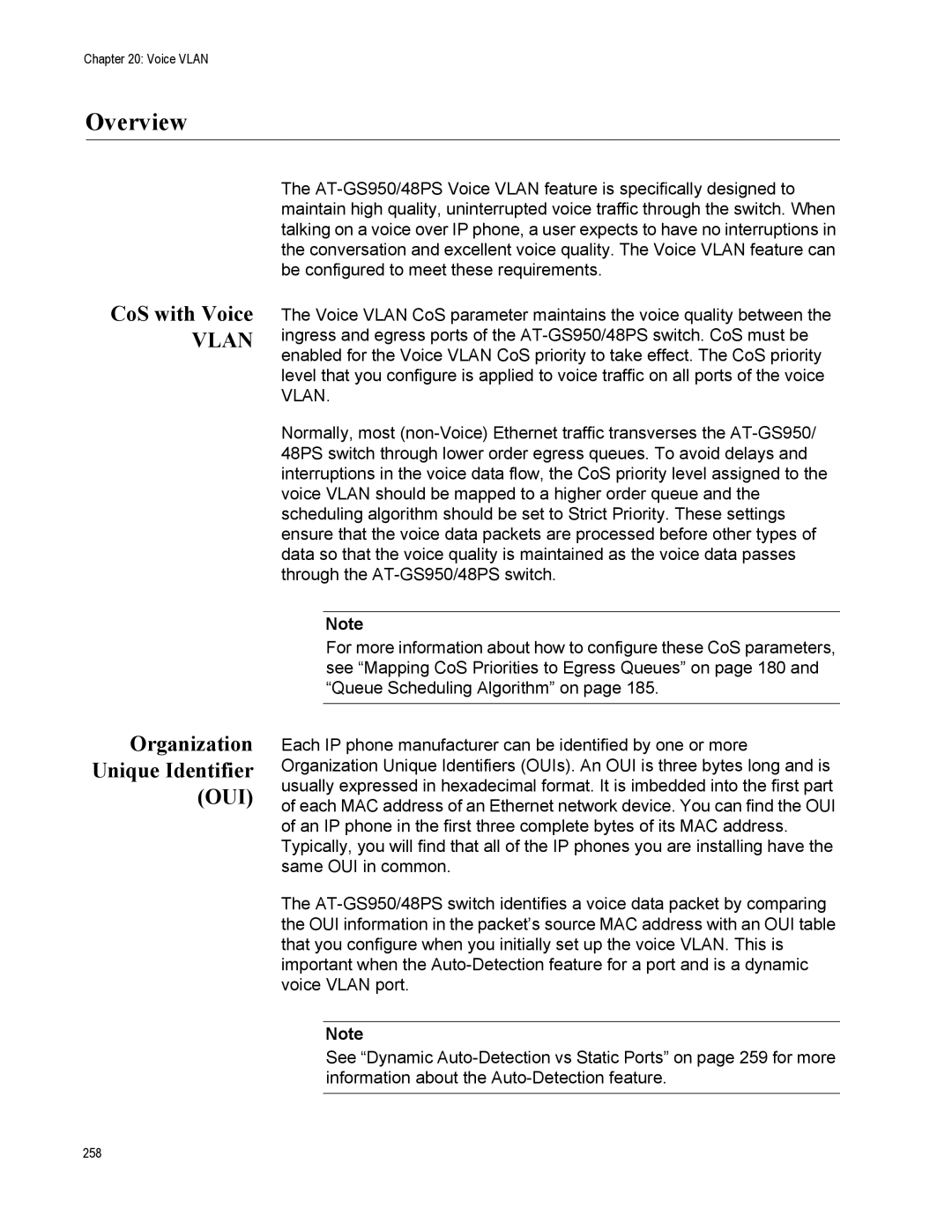The AT-GS950/48PS Voice VLAN feature is specifically designed to maintain high quality, uninterrupted voice traffic through the switch. When talking on a voice over IP phone, a user expects to have no interruptions in the conversation and excellent voice quality. The Voice VLAN feature can be configured to meet these requirements.
The Voice VLAN CoS parameter maintains the voice quality between the ingress and egress ports of the AT-GS950/48PS switch. CoS must be enabled for the Voice VLAN CoS priority to take effect. The CoS priority level that you configure is applied to voice traffic on all ports of the voice VLAN.
Normally, most (non-Voice) Ethernet traffic transverses the AT-GS950/ 48PS switch through lower order egress queues. To avoid delays and interruptions in the voice data flow, the CoS priority level assigned to the voice VLAN should be mapped to a higher order queue and the scheduling algorithm should be set to Strict Priority. These settings ensure that the voice data packets are processed before other types of data so that the voice quality is maintained as the voice data passes through the AT-GS950/48PS switch.
Note
For more information about how to configure these CoS parameters, see “Mapping CoS Priorities to Egress Queues” on page 180 and “Queue Scheduling Algorithm” on page 185.
Each IP phone manufacturer can be identified by one or more Organization Unique Identifiers (OUIs). An OUI is three bytes long and is usually expressed in hexadecimal format. It is imbedded into the first part of each MAC address of an Ethernet network device. You can find the OUI of an IP phone in the first three complete bytes of its MAC address. Typically, you will find that all of the IP phones you are installing have the same OUI in common.
The AT-GS950/48PS switch identifies a voice data packet by comparing the OUI information in the packet’s source MAC address with an OUI table that you configure when you initially set up the voice VLAN. This is important when the Auto-Detection feature for a port and is a dynamic voice VLAN port.
Note
See “Dynamic Auto-Detection vs Static Ports” on page 259 for more information about the Auto-Detection feature.

